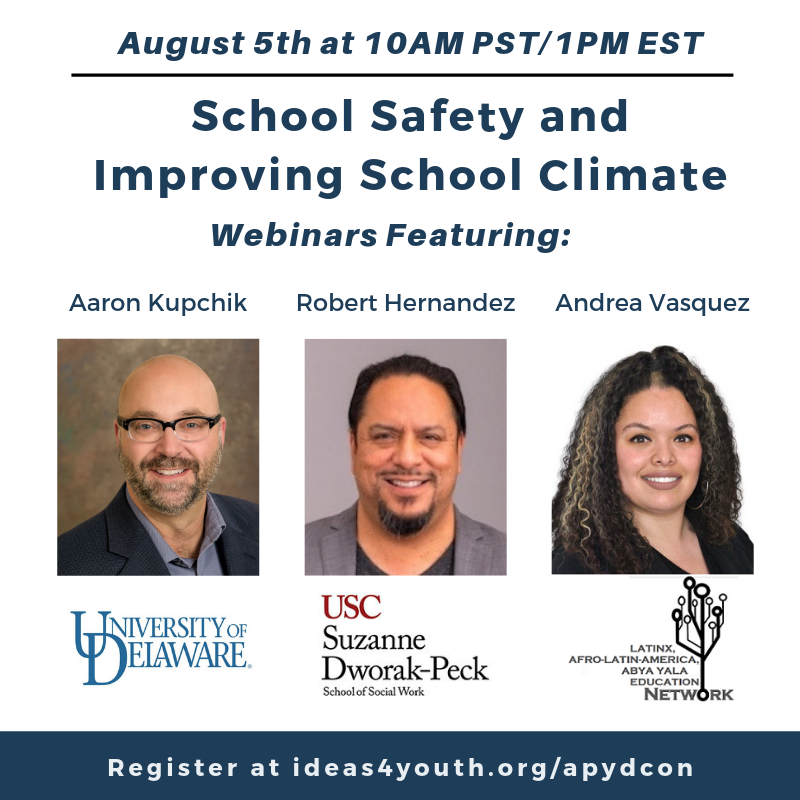
School shootings have become rising occurrences that have plagued American culture. In fact, school safety has been a growing issue around the world. About 150 million 13 to 15-year-old students worldwide have said they experience violence in the form of physical fights, bullying, physical punishment by teachers, or attacks on classrooms and campuses. This is an attack on our most vulnerable, yet most important population. Increasing safety means redefining what school safety and violence prevention mean.
One proposed response to school violence is increased security—armed teachers, school security, or police officers on campuses. Equipping teachers with guns, police with guns, and having more guns on campus is essentially fighting guns and violence with more guns and violence. While I understand that could be appropriate in very specific situations (e.g., when schools are under attack), there are negative implications of having armed authority on campuses. Teachers are often not adequately trained, and minorities often bear the brunt of punishment when armed authority is placed in schools. Minorities are more likely to be treated as adults and viewed as a threat. Accordingly, minorities are more likely to be involved in “in school” arrests or referred to law enforcement. Ultimately, research shows that there are increased risks to children when there is the presence of a gun, and we should do whatever we can to reduce this possibility.
An appropriate response to school safety and violence prevention may not be armed protection on campuses. Instead, a better response may be instilling mental health education and services in schools and changing the culture of the environment of schools. Looking at the problem as we have traditionally, elicits responses that typically reflect political agendas, false narratives, groupthink, and band-aid surface-level solutions. When kids are facing threats at school, it is a time to come together, think like social workers, and come up with real solutions that will create sustainable change.
Prioritizing Mental Health in Schools
 An appropriate response to school safety and violence prevention should come from the consideration of big-picture thinking, systems analysis, and bio-psycho-social analysis. As a social worker, I advocate for looking at problems from a “systems” approach so that we can create effective and holistic solutions. This often requires redefining the “problem.” While school violence has been on the rise, youth mental health statistics have as well. In fact, mental health problems are a risk factor for school violence, though not the cause. This tells us that maybe school safety and violence prevention is a school climate problem.
An appropriate response to school safety and violence prevention should come from the consideration of big-picture thinking, systems analysis, and bio-psycho-social analysis. As a social worker, I advocate for looking at problems from a “systems” approach so that we can create effective and holistic solutions. This often requires redefining the “problem.” While school violence has been on the rise, youth mental health statistics have as well. In fact, mental health problems are a risk factor for school violence, though not the cause. This tells us that maybe school safety and violence prevention is a school climate problem.
Therefore, a more appropriate response to school violence may be paying more attention to incorporating mental health education in schools, teaching kids positive conflict resolution skills, and developing a positive conflict culture. We teach physical education in schools as a requirement a part of the curriculum. When are we going to prioritize mental health education and make it a part of the curriculum as well? Schools that have made this attempt have shown favorable results so far. School-based mental health programs have resulted in reduced anxiety, improved grades, lowered substance abuse rates, and reduced school bullying. Essentially, mental health education programs in schools can help prevent violence and create a positive learning environment.
Our focus should be empowering youth to make better decisions, improving relations, and creating the change we want. The solution is to invest in our youth. Instead of looking at “go-to” solutions and legal remedies, let’s try education reform—it’s the social work way.
Ready to Learn More?
For further discussion, join us for the Alliance for Positive Youth Development Conference (APYDCON) happening August 5-7, 2019. The first day of workshops will focus on School Safety and Improving School Climate. The first event will be an expert Q&A panel featuring Aaron Kupchik, Juvenile Justice/Sociology Professor at the University of Delaware, and Robert Hernandez, Senior Lecturer at USC Suzanne Dworak-Peck School of Social Work Dept of Children Youth and Families. Following this session will be a presentation by Andrea Vasquez, Co-Director of the Latinx, Afro-Latin-America, Abya Yala Education Network in Toronto, Canada. The panel and presentation will offer tangible solutions to help create safe school environments. Register for this free unique virtual conference at http://ideas4youth.org/apydcon.




1 pings